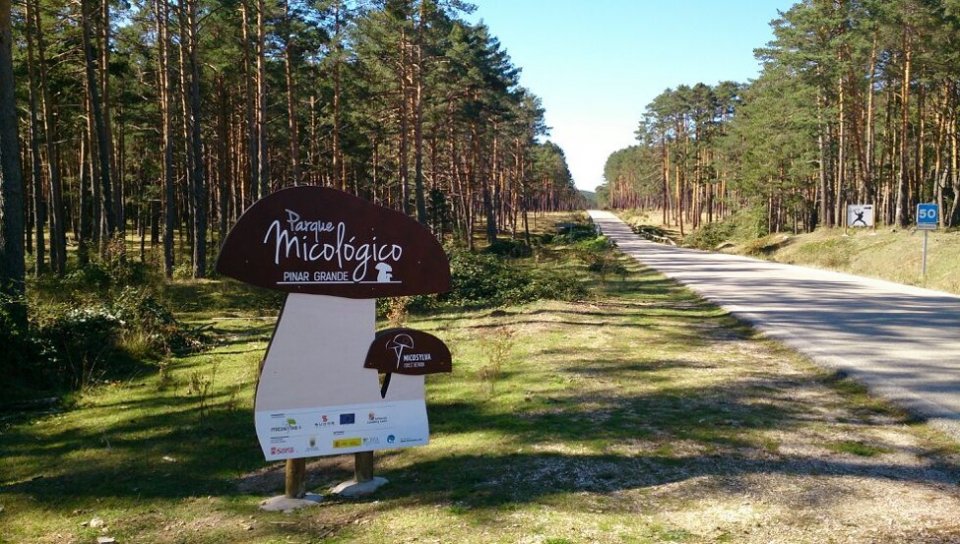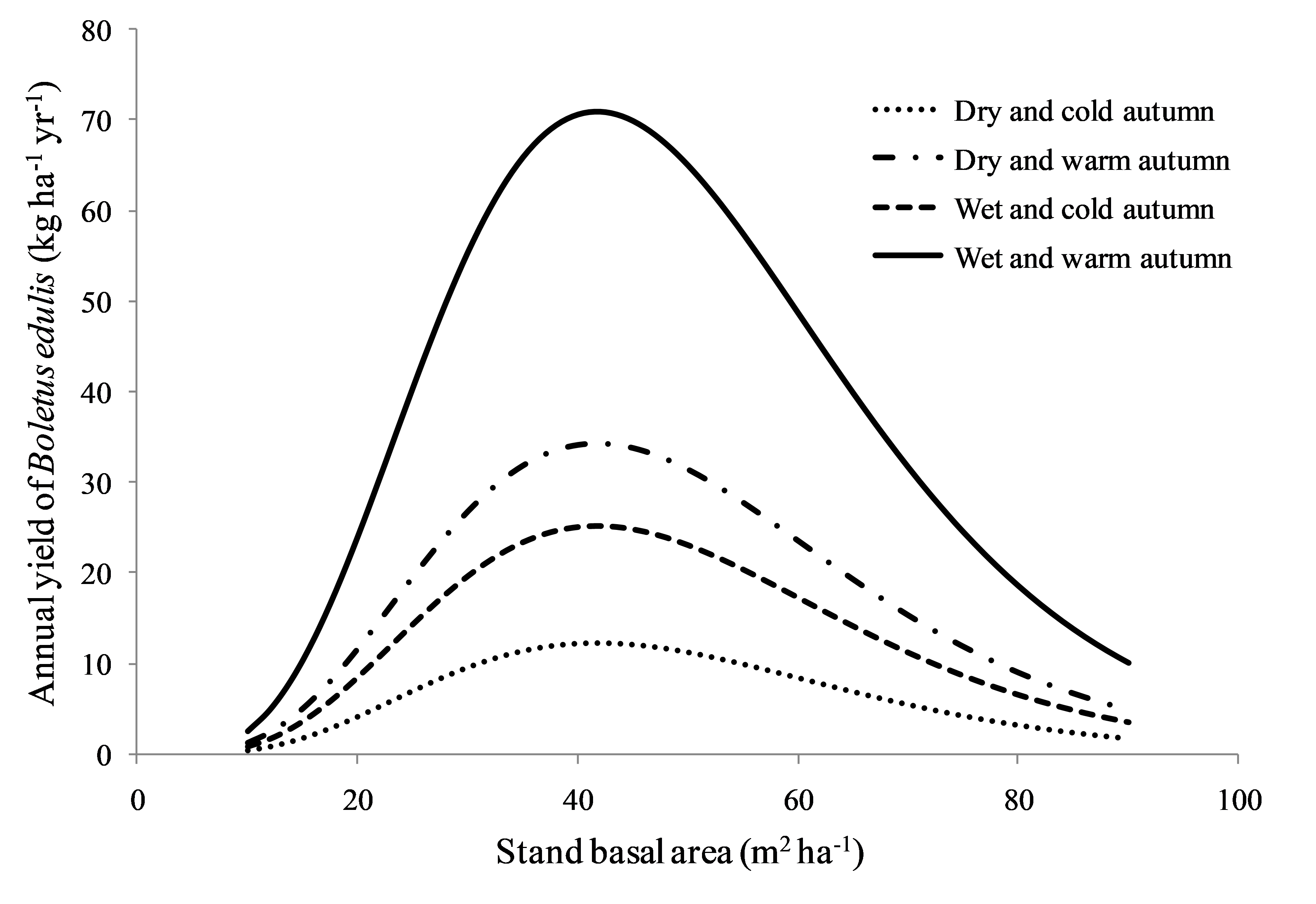
The purpose of the study was to develop empirical models for predicting the fresh weight yield of the target species Boletus edulis, one of the most appreciated fungal species worldwide. The objective of the models is to identify the influential factors that drive the sporocarp emergence. The modeling process was applied to the “Pinar Grande” area (Soria province, Spain), where we analyzed fifteen years of mushroom data continuously recorded in eighteen permanent plots.
The presence of fungal sporocarps is influenced by different factors. Among them, the meteorology is clearly the main driver of the fungal fruiting, but other factors such as topographic conditions or forest stand structure, which can be modified through silvicultural interventions, are also relevant. The use of modelling techniques based on mushroom data can help in the identification of the relevant factors for predicting mushroom yields and thus, provide mycosilvicultural guidelines to forest managers.
The models show that stand basal area is a strong factor influencing Boletus edulis yields, together with weather factors (precipitation and temperature). According to the model, the optimal stand basal area for Pinus sylvestris forests of Pinar Grande is around 40 m2 ha-1. The average yield of the target species is around 26 kg ha-1 yr-1, reaching a maximum of 200 kg ha-1 yr-1 in exceptional years. The warm and wet autumns seem to favour higher bolete productions, whilst the yields decreased with cold and dry autumns.
The use of modelling techniques is a supportive tool for the identification of relevant factors that affect mushroom yields. However, and due to the inherent variability of mushroom yields among years, long-term data series are needed in order to have accurate models. In spite of the difficulty of having this type of records, which includes a recommended weekly monitoring of the mycological productions in all the plots, the outcomes of the models can provide a valuable information for the forest managers.
The Pinar Grande area has traditionally had a timber oriented management, which includes successive thinnings during the rotation period with a final clear-cut of the remaining trees. However, the high production of Boletus edulis in the area, together with the increasing demand of the mushroom pickers poses the question to the forest managers on how to make compatible both productions. The obtained models provide an useful answer to the forest managers of the area.
The next challenge of the experimental setup was to evaluate the effect of clear-cuts on the fungal communities, and specifically on Boletus edulis. This objective was handled through a new experimental design which included total clear-cutting and partial tree clear-cutting leaving some trees in the plots. After five years of monitoring, we realized the negative effect of both clear-cuts on Boletus edulis mycelium.
Fernando Martínez Peña, fmartinezpe@cita-aragon.es, www.eumi.eu
Sergio de-Miguel, sergio.demiguel@udl.cat, www.udl.cat
José Antonio Bonet, jantonio.bonet@udl.cat, www.udl.cat
Juan Martínez de Aragón, mtzda@ctfc.es, www.ctfc.cat
Further information
MARTÍNEZ-PEÑA, F.; DE MIGUEL, S.; PUKKALA, T.; BONET, J.A.; ORTEGA-MARTÍNEZ, P.; ALDEA, J.; MARTÍNEZ DE ARAGÓN, J. 2012. “Yield models for ectomycorrhizal mushrooms in Pinus sylvestris forests with special focus on Boletus edulis and Lactarius group deliciosus”. Forest, Ecology and Management, 282: 63-69
TOMAO, A.; BONET, J.A.; MARTÍNEZ DE ARAGÓN, J.; De-MIGUEL, S. 2017. “Is silviculture able to enhance wild forest mushroom resources? Current knowledge and future perspectives”. Forest, Ecology and Management, 402: 102-114
PARLADÉ, J.; QUERALT, M.; PERA, J.; BONET, J.A.; CASTAÑO, C.; MARTÍNEZ-PEÑA, F.; PIÑOL, J.; SENAR, M.A.; DE MIGUEL, A.M. 2019 “Temporal dynamics of soil fungal communities after partial and total clear-cutting in a managed Pinus sylvestris stand”. Forest, Ecology and Management, 449: 117456.
Source: Fernando Martínez-Peña

Relationship between the annual yield of Boletus edulis and stand basal area
